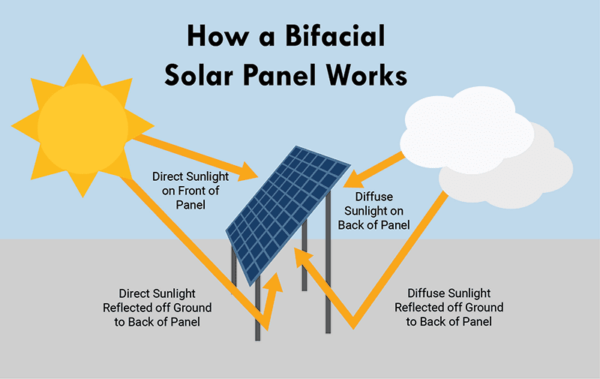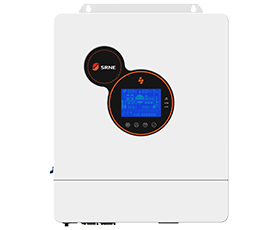A Detailed Guide to Bifacial Solar Panel
Solar technology is fast evolving every day. The solar panel is the most necessary and important part of a solar system also need to evolve for better and efficient functioning and also to overcome the current limitations. A great thing about solar panels is that they keep working all day. It doesn’t matter if the sun’s just risen, or just about to set. But what would you say if I tell you there are solar panels that pick up sunlight from the underside too and deliver up to 30% more energy?
In this article, we will focus on a latest technology solar panel, called bifacial solar panels and discuss its features and advantages over the existing solar panels.

What is bifacial solar panel?
Bifacial solar panels are double-sided panels that use both the top and bottom sides to capture and transform the solar energy. They are different from the monofacial solar panels which only use one side for solar energy production.
Bifacial solar panels are equipped with solar cells on both the top and the rear of the panel. They are usually monocrystalline, although polycrystalline can also be used. Because they are slim, they resemble thin-film panels. Bifacial solar panels are frequently frameless, too.
Since they’re made to be completely transparent, they are usually made of glass. The top of each solar module is covered in protective glass. The flipside may be glass or a clear backsheet. This is different from conventional solar panel systems with opaque backings.
How do they work?
Bifacial solar panels work just like normal solar panels. They use the same semiconductor material which generates power by converting solar energy into electricity.
The top solar cells of a bifacial solar panel face the sun so they can absorb the available sun rays directly. This make is it no different than a conventional solar panel in this sense. The bottom cells, however, are designed to absorb reflected light. This means that unlike conventional one-sided panels, bifacial panels produce more energy when you angle them to a white roof or to the ground.
In these types of installations, there is a great amount of reflection. That’s because sunlight bounces off of all objects reflectively at many different angles. Bifacial solar panels are better able to capture more of it. They are even productive on cloudy days when monofacial solar cells are at a greater disadvantages.
You can also capitalize on the earth’s daily rotation in relation to the sun. To produce two energy peaks throughout the day, half of the bifacials in an array can be tilted toward the east to capture sunrise and morning rays; as for the second half, to the west, to soak up afternoon intensity and sunset rays.
Pros and Cons of Bifacial Solar Panels
Bifacial solar panels are becoming increasingly popular, and have been rapidly gaining market share as they become more affordable and efficient. Many people have been choosing to install bifacial rather than monofacial solar panels to take advantages of the benefits. But do the benefits outweigh the costs?
Pros
Bifacial solar panels are more efficient than monofacial, simply because they collect sunlight on either side. Many bifacial solar panel manufacturers claim between 20% and 30% more power output from their bifacial panels compared to monofacial panels. They also perform better in diffuse light because the extra surface area allows bifacial panels to capture more light. This means that the long-term costs are lower than monofacial panels. The higher efficiency also translates into less space per watt, so homeowners can install fewer panels to meet their needs. Due to their durability and resistance to weather and various types of degradation, bifacial solar panels are expected to have longer lifespans.
Cons
Due to the manufacturing process, bifacial solar panels are expensive. They can cost up to 10% more than monofacial solar panels, which translates to an extra 20 cents per watt. Then there are the installation costs. Besides, bifacial solar panels are pretty heavy, meaning they cost more to install due to the extra labor.
Bifacial solar panels are the futures of the industry. Although bifacial systems are slightly more expensive than monofacial modules, the power bonus you’ll get from them is more than enough to justify the cost.



































































































